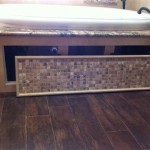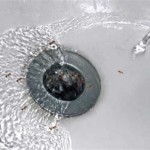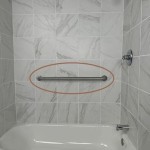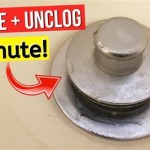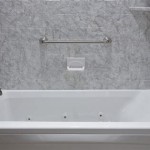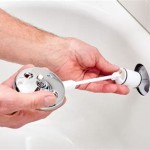How To Clean Bathtub Stains Naturally
Maintaining a clean bathtub is essential for hygiene and aesthetics. Over time, bathtubs can accumulate stubborn stains from soap scum, hard water deposits, mildew, and general grime. While numerous commercial cleaning products are available, many contain harsh chemicals that can be harmful to users and the environment. This article outlines several effective and natural methods for cleaning bathtub stains, utilizing readily available household ingredients.
Prior to initiating any cleaning process, it's crucial to identify the type of stain present. Common culprits include soap scum (a combination of soap residue, body oils, and minerals), hard water stains (calcium and magnesium deposits), rust stains (iron oxide due to metal fixtures or water), and mold or mildew (fungal growth thriving in moist environments). Identifying the stain will allow for the selection of the most appropriate cleaning method.
Preparation is key to successful stain removal. Begin by rinsing the bathtub with warm water to loosen any surface debris and hydrate the stains. This step enhances the effectiveness of subsequent cleaning solutions. Ensure adequate ventilation by opening windows or using a bathroom fan. Protective gloves should be worn to protect the skin from prolonged exposure to cleaning agents, even natural ones.
Utilizing Baking Soda and Vinegar
Baking soda (sodium bicarbonate) and vinegar (acetic acid) are versatile and readily available cleaning agents. Their combined chemical reaction creates a fizzing action that helps to lift stains and dirt. This method is particularly effective for general cleaning and tackling mild soap scum.
To utilize this method, begin by lightly dampening the interior of the bathtub. Sprinkle a generous amount of baking soda onto the stained areas. The baking soda acts as a mild abrasive, assisting in the physical removal of the stain. Next, pour white vinegar into a spray bottle. Spray the vinegar onto the baking soda-covered surfaces. A fizzing reaction will occur as the vinegar reacts with the baking soda, releasing carbon dioxide. Allow the mixture to sit for approximately 15-20 minutes. This dwell time allows the solution to penetrate and loosen the stains.
After the dwell time, use a non-abrasive scrubbing brush or sponge to scrub the stained areas. Apply moderate pressure to dislodge the loosened stains. For particularly stubborn stains, a paste of baking soda and water can be applied directly to the stain and left to sit for a longer period before scrubbing. Once the scrubbing is complete, rinse the bathtub thoroughly with warm water to remove all traces of baking soda and vinegar. If a lingering vinegar odor is present, it will dissipate naturally with ventilation.
This method can be repeated as necessary for more challenging stains. For tubs with delicate surfaces, such as acrylic, test the baking soda and vinegar mixture in an inconspicuous area first to ensure it does not cause any damage or discoloration. Avoid using abrasive scrub brushes on acrylic tubs, as they can scratch the surface.
Harnessing the Power of Lemon Juice and Salt
Lemon juice, with its acidic properties, is an excellent natural cleaner and disinfectant. It contains citric acid, which can effectively break down soap scum, hard water stains, and even rust stains. When combined with salt, the abrasive nature of the salt enhances the cleaning power of the lemon juice.
For mild soap scum and light stains, apply lemon juice directly to the affected areas. Let it sit for about 30 minutes to an hour. The acidity of the lemon juice will help loosen the buildup. For tougher stains, create a paste by mixing lemon juice with coarse salt. The salt acts as a mild abrasive, helping to scrub away stubborn residues. Apply the paste to the stained areas and let it sit for about 30 minutes before scrubbing gently with a sponge or cloth.
For rust stains, lemon juice can be particularly effective. Apply lemon juice directly to the rust stain and let it sit for several hours, or even overnight for severe stains. The citric acid will react with the rust, helping to dissolve it. After the soaking period, scrub the area with a non-abrasive sponge or cloth. Rinse thoroughly with water.
When working with lemon juice, it is essential to avoid contact with grout, as the acidity can potentially damage or discolor it. If lemon juice comes into contact with grout, rinse it immediately with water. Additionally, be cautious when using lemon juice on colored bathtubs, as it may cause fading over time. Always test the solution in an inconspicuous area first.
Employing Borax for Mold and Mildew Removal
Borax (sodium borate) is a naturally occurring mineral that possesses antifungal and antibacterial properties. It is an effective cleaning agent for removing mold and mildew, particularly in damp environments like bathtubs. Borax is less harsh than bleach but still requires careful handling.
To use borax for mold and mildew removal, first, ventilate the bathroom adequately. Mix borax with water to create a paste. The consistency should be thick enough to adhere to the affected areas. Apply the borax paste liberally to the mold or mildew stains, ensuring complete coverage. Allow the paste to sit for several hours, or preferably overnight, to allow the borax to penetrate and kill the mold and mildew spores.
After the soaking period, scrub the treated areas with a stiff brush or sponge. The borax will help to loosen and remove the mold and mildew. Rinse the bathtub thoroughly with warm water to remove all traces of borax. Ensure that the area is completely dry to prevent the regrowth of mold and mildew.
When handling borax, it is important to wear gloves to protect the skin. Avoid inhaling borax dust, as it can cause respiratory irritation. Keep borax out of reach of children and pets. While borax is a natural cleaning agent, it should still be used with caution and proper ventilation.
Beyond these primary methods, several other natural cleaning agents can be used to address bathtub stains. Hydrogen peroxide is a mild bleaching agent that can help to lighten stains and disinfect surfaces. It can be applied directly to stains and allowed to sit for several minutes before rinsing. Tea tree oil, known for its antifungal and antibacterial properties, can be diluted with water and sprayed onto surfaces to prevent mold and mildew growth.
Regular maintenance is crucial for preventing the buildup of bathtub stains. After each bath or shower, rinse the bathtub with warm water to remove soap residue and body oils. Wipe down the surfaces with a clean cloth to prevent water spots and mineral deposits. Ensure proper ventilation to reduce humidity and prevent mold and mildew growth.
Implementing these natural cleaning methods and adhering to a regular maintenance schedule can help keep bathtubs clean, hygienic, and free of unsightly stains without resorting to harsh chemicals. By utilizing readily available household ingredients and practicing consistent cleaning habits, a pristine bathtub can be easily maintained.

How To Clean Tough Stains From A Bathtub 4 Easy Methods

How To Clean Tough Stains From A Bathtub 4 Easy Methods

How To Remove Tub Stains Naturally With Non Toxic Homemade Cleaners

How To Remove Tub Stains Naturally With Non Toxic Homemade Cleaners

How To Clean Your Bathtub The Home Depot

This Tip Takes The Pain Out Of Cleaning Your Bathtub

How To Clean Tough Stains From A Bathtub 4 Easy Methods

How To Turn Your Bleach Stained Red Bathtub White Again 4 Steps With Pictures Instructables

How To Remove Stains From A Bathtub

How To Clean A Bathtub Deep And After Each Use
Related Posts


